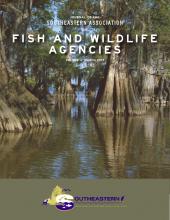Variation in Number of Ducks Harvested among Hunters in the Central Flyway
Knowledge of the relationship between waterfowl hunters and harvest levels may better inform harvest management decisions. We examined frequency of different sizes of daily harvests among duck hunters, and hunters' contributions to duck harvest in the Central Flyway from 1975-1984, 1988-1993, and 2002-2011 using the U.S. Fish and Wildlife Service's Parts Collection Survey. We stratified hunters sampled by the Parts Collection Survey into 10 equal hunter groups based on seasonal harvest. Hunter groups were ranked from 1 to 10, with hunter group 1 representing hunters with the lowest...
